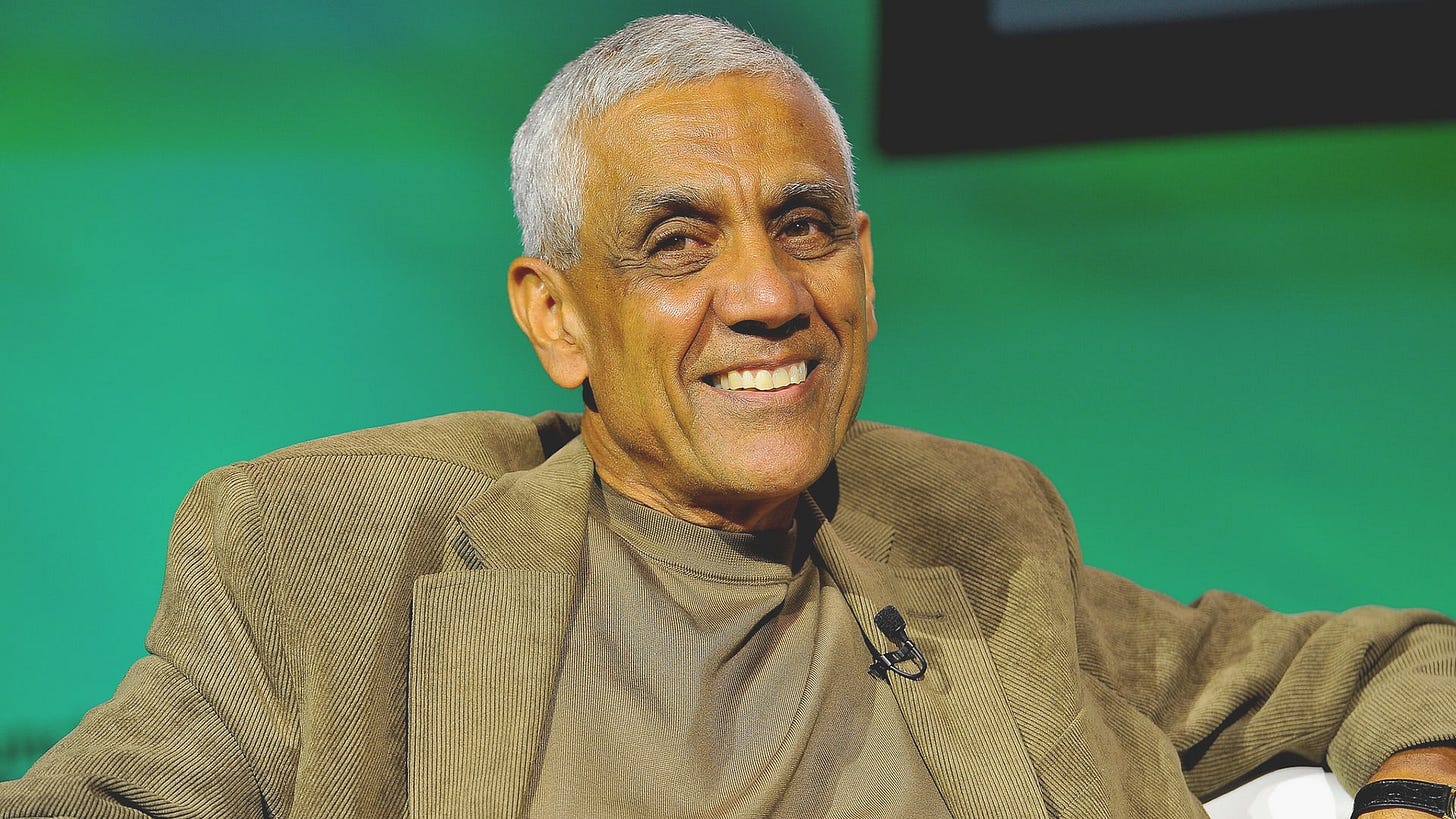Can We Build Fast Enough to Keep Up With AI?
Vinod Khosla sees abundance ahead, but only if the world delivers the infrastructure to match.
Welcome to Global Data Center Hub. Join 1500+ investors, operators, and innovators reading to stay ahead of the latest trends in the data center sector in developed and emerging markets globally.
Vinod Khosla has a track record of seeing around corners.
He backed Sun Microsystems when most had never heard of Unix.
He bet on Juniper before telecom was cool.
He funded Square before fintech was a thing.
In 2024, he made another prediction that may be his boldest yet.
In AI: Dystopia or Utopia?, a 13,000-word essay, Khosla argued that artificial intelligence will reshape society at a civilizational scale.
Not in 50 years.
Not in theory.
But within our lifetimes.
The World Khosla Sees
Khosla’s AI future is defined by radical abundance:
Doctors and teachers available to all, at near-zero cost
Robots handling physical labor, freeing humans from repetitive work
GDP growth driven by intelligence, not hours worked
A new social contract where universal income decouples survival from employment
In his view, AI will become the “steam engine of the mind,” an intellectual force multiplier for every individual, regardless of geography or income.
This is not empty optimism.
It’s a serious economic argument backed by decades of investment pattern recognition.
But it depends on one fragile and often overlooked foundation.
The world must build the infrastructure to support it.
What Most Missed
While most of the conversation revolves around model performance, chip innovation, or debates about AGI timelines, Khosla’s vision quietly relies on something more fundamental.
Sufficient compute capacity to deliver intelligence at scale
Reliable, clean power to meet exponential demand
Global networks to deliver AI to the edge
Data centers that are fast, efficient, and everywhere
And this is where the real challenge begins.
Because right now, infrastructure is falling behind the intelligence.
The Bottlenecks Are Real
For all the hype around GPT, Claude, Gemini, and xAI, infrastructure leaders see a more sobering reality.
Permitting timelines for hyperscale data centers can stretch to 3 to 5 years
Grid congestion in key markets is reaching crisis levels
Power purchase agreements are increasingly tied up in geopolitical and regulatory friction
Training clusters require dense, uninterrupted power that few places can provide
Even in the most advanced economies, cities are reaching their limits on power and land.
In emerging markets, most regions are still locked out of AI-scale infrastructure.
The result is a widening gap.
Not just between rich and poor, but between places that can support AI infrastructure and those that cannot.
The New Inequality
If AI becomes the new engine of economic productivity, then access to compute becomes a form of economic power.
This reframes inequality.
It is no longer just about capital or talent.
It is about physical access.
Who can train a frontier model without a 12-month wait?
Who has grid capacity and permitting speed?
Who controls land near substations or fiber routes?
Khosla’s vision of AI for all becomes impossible if only a handful of regions can support it.
This is the infrastructure divide.
And it is growing faster than most people realize.
Infrastructure as Destiny
Khosla does not focus on infrastructure in his essay, but the message is clear.
AI cannot deliver abundance without scale.
And scale is determined by infrastructure.
Smarter models are not enough.
We need faster pathways to bring those models to everyone.
That means:
Rethinking data center development around power availability, not just real estate
Creating permitting frameworks that accelerate infrastructure rather than delay it
Treating grid access as a strategic national asset
Making compute a core part of industrial policy
We cannot allow a world where 80 percent of AI productivity is stuck in 20 percent of the world’s infrastructure.
A Call to Builders
For investors, developers, and policymakers, the implications are clear.
If we want AI to solve global healthcare, we need infrastructure that delivers low-latency inference
If we want AI tutors in every classroom, we need edge compute in every region
If we want post-scarcity economics, we must build the physical systems that can deliver intelligence cheaply, reliably, and everywhere
The frontier is no longer just about algorithms.
It is about substations, cooling, grid interconnections, and fiber networks.
The AI economy will be built with concrete, copper, and coordination.
Final Thought
Vinod Khosla sees AI as the next engine of human progress.
But every engine needs a delivery system.
If we fail to match the scale of infrastructure with the potential of intelligence, we do not just slow innovation.
We risk entrenching a future where abundance is hoarded, and access is gated.
This is not just a technical challenge.
It is a moral one.
Now is the time to build the physical foundation of the AI age.
Because if we wait, it will be too late.

